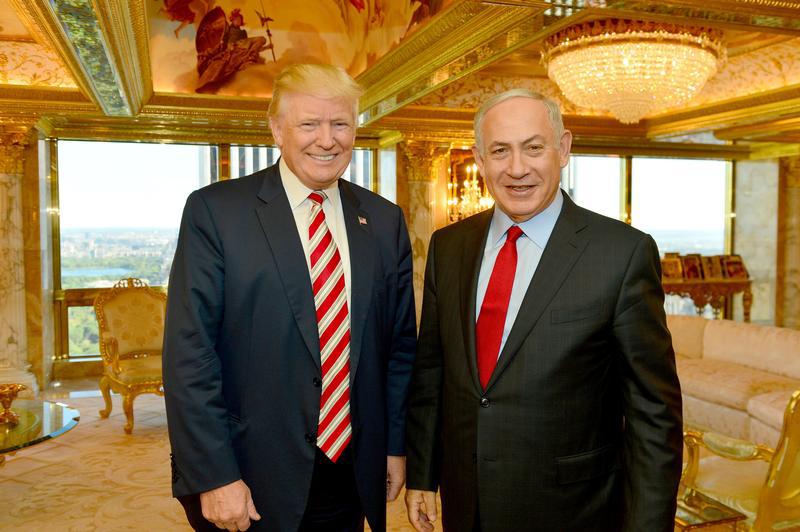Trump’s ‘Deal of the Century’ for Palestine Is a Sideshow
Expand Israeli Prime Minister Benjamin Netanyahu (R) stands next to Republican U.S.

presidential candidate Donald Trump during their meeting in New York, September 25, 2016. © 2016 Kobi Gideon/Government Press Office (GPO)/Handout via REUTERS/File Photo Israeli Prime Minister Benjamin Netanyahu (R) stands next to Republican U.S. presidential candidate Donald Trump during their meeting in New York, September 25, 2016. The Trump administration has organized an economic workshop this week in Bahrain as part of its Middle East peace plan, sometimes referred to as the “Deal of the Century.” The $50 billion, 10-year economic component of the plan aims to “empower” and “unlock the vast potential of the Palestinian people” – yet the 40-page document says nothing about why Palestinians are disempowered today and unable to unlock their potential.
The result? A sideshow divorced from reality.
The plan fails to address the most significant barrier to economic development: Israeli abuses of Palestinians’ human rights. For example, it sets out to develop a “transportation corridor directly connecting the West Bank and Gaza through a major road and, potentially, a modern rail line.” But what good is a corridor when Israel imposes a travel ban on the 2 million Palestinians of Gaza that prevents nearly all of them from traveling – not only to the West Bank, but anywhere else? The problem is not a lack of roads, but Israeli and Egyptian restrictions on movement that have turned Gaza into an open-air prison.
The heavy-handed tactics used by rival Palestinian authorities compounds the economic misery.
The plan speaks of the importance of private property rights without mentioning the Israeli authorities’ methodical theft of thousands of hectares of privately owned Palestinian land in the West Bank to build settlements, which are illegal under international humanitarian law, or their illegal exploitation of natural resources for their own benefit while imposing severe restrictions on how Palestinians can use those resources.
The World Bank estimated in 2013 that discriminatory Israeli restrictions in Area C of the West Bank – the area under exclusive Israeli security control – cost the Palestinian economy $3.4 billion per year. Lift those and over 10 years you get almost the same economic benefit of the US plan without investing a cent. With such restrictions in place, proposed projects are bound to fail, no matter how much money is thrown at them. US officials say they will soon release the plan’s political component, but relegating rights to the political realm is precisely the problem. Opening Gaza and ending settlements, arbitrary restrictions on movements, and discrimination are not up for barter but abuses of core rights and legal principles that should be the starting point. A rethink of the “peace process” is long overdue, but initiatives that are not centered on the dignity and respect of the rights of Palestinians will g.
Read the full article at the original website
References:
- /view-mode/modal/300076
- https://www.whitehouse.gov/peacetoprosperity/enhancing-palestinian-governance/
- https://www.hrw.org/news/2018/10/23/palestine-authorities-crush-dissent
- https://www.hrw.org/report/2018/11/20/bed-and-breakfast-stolen-land/tourist-rental-listings-west-bank-settlements
- https://www.hrw.org/report/2016/01/19/occupation-inc/how-settlement-businesses-contribute-israels-violations-palestinian
- http://www.worldbank.org/en/news/press-release/2013/10/07/palestinians-access-area-c-economic-recovery-sustainable-growth
- https://www.whitehouse.gov/wp-content/uploads/2019/06/MEP_programsandprojects.pdf
